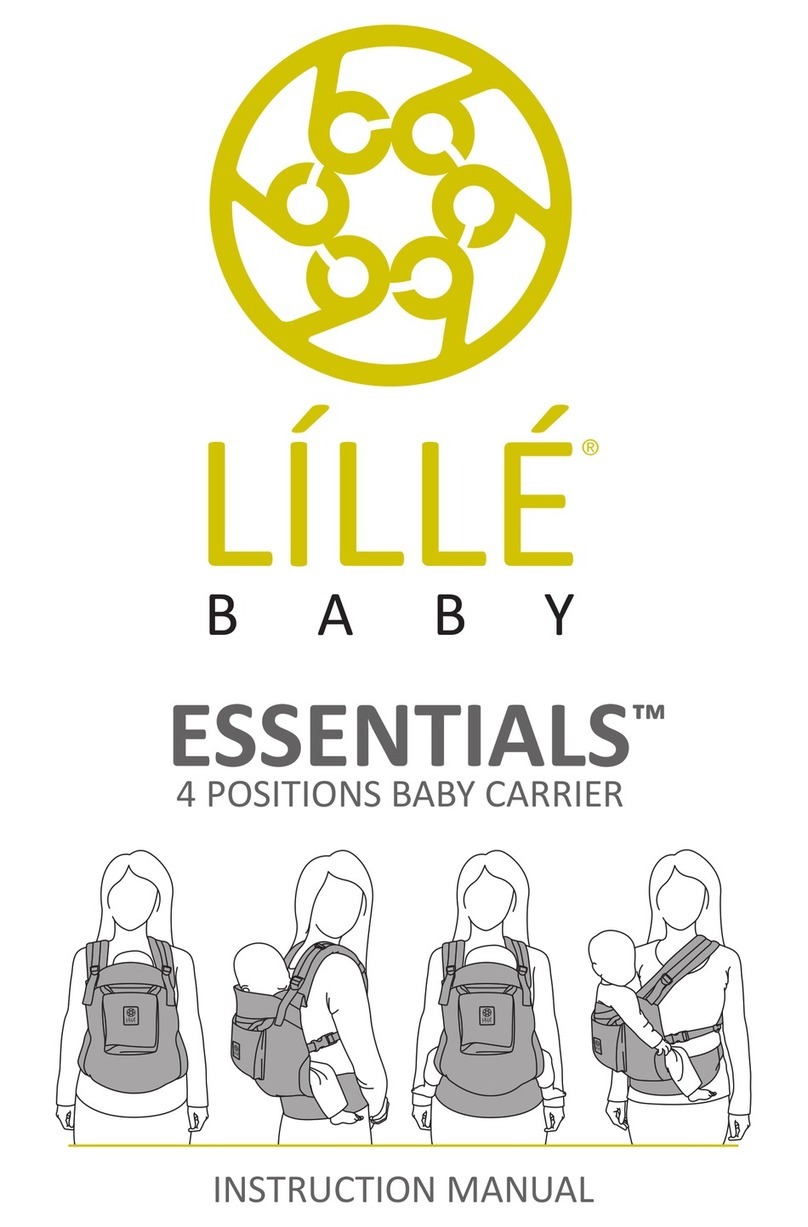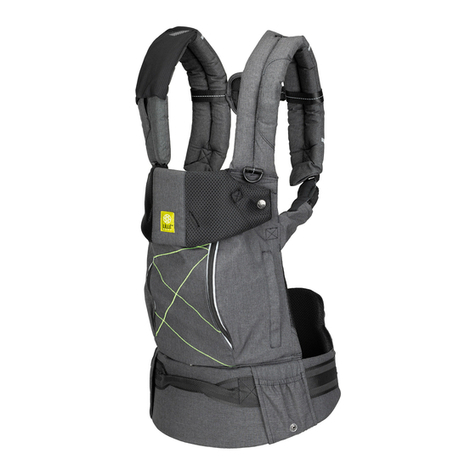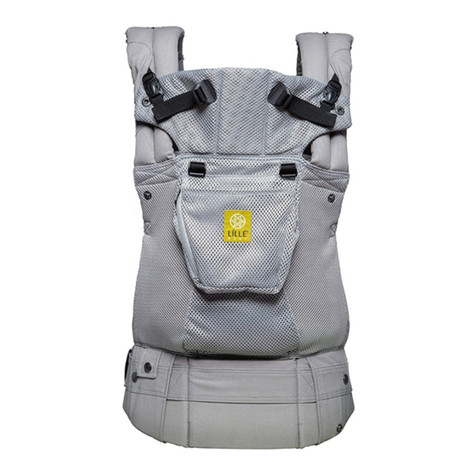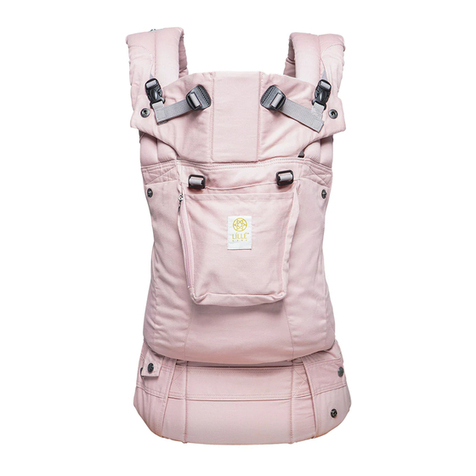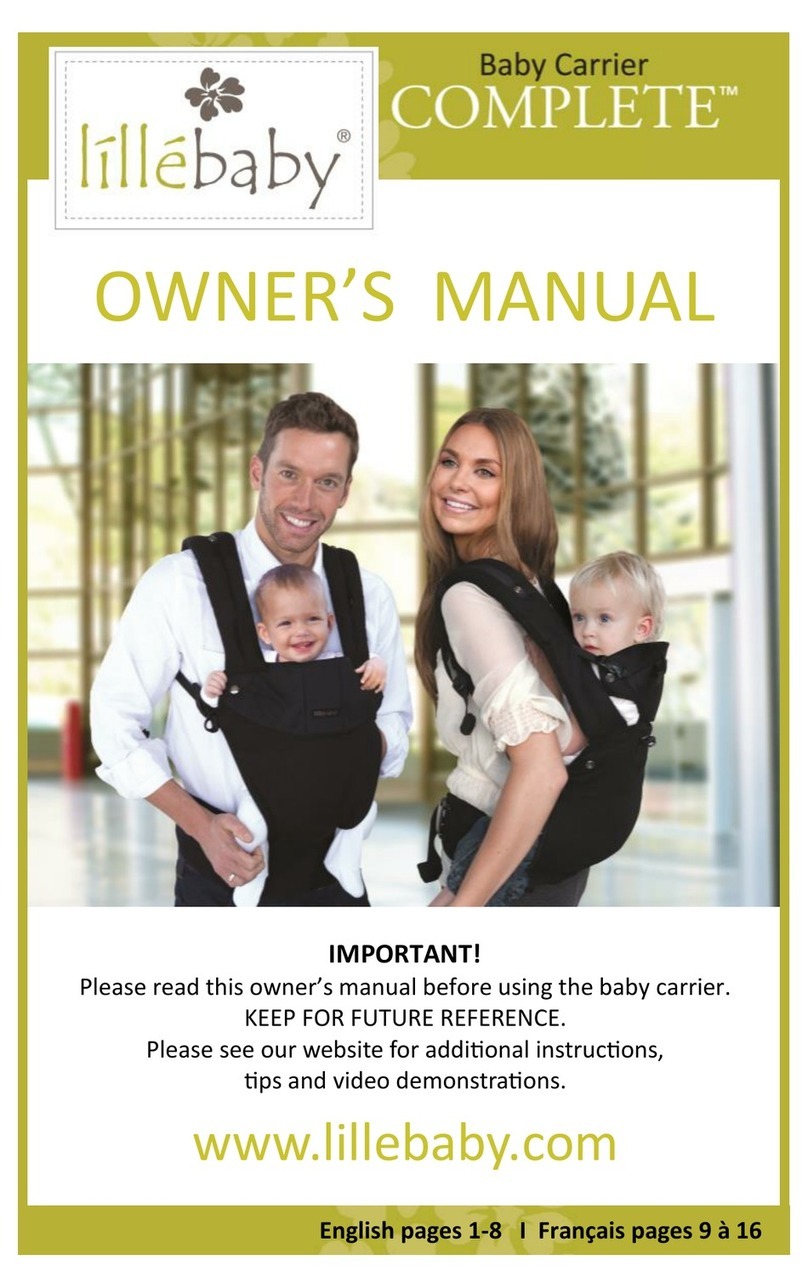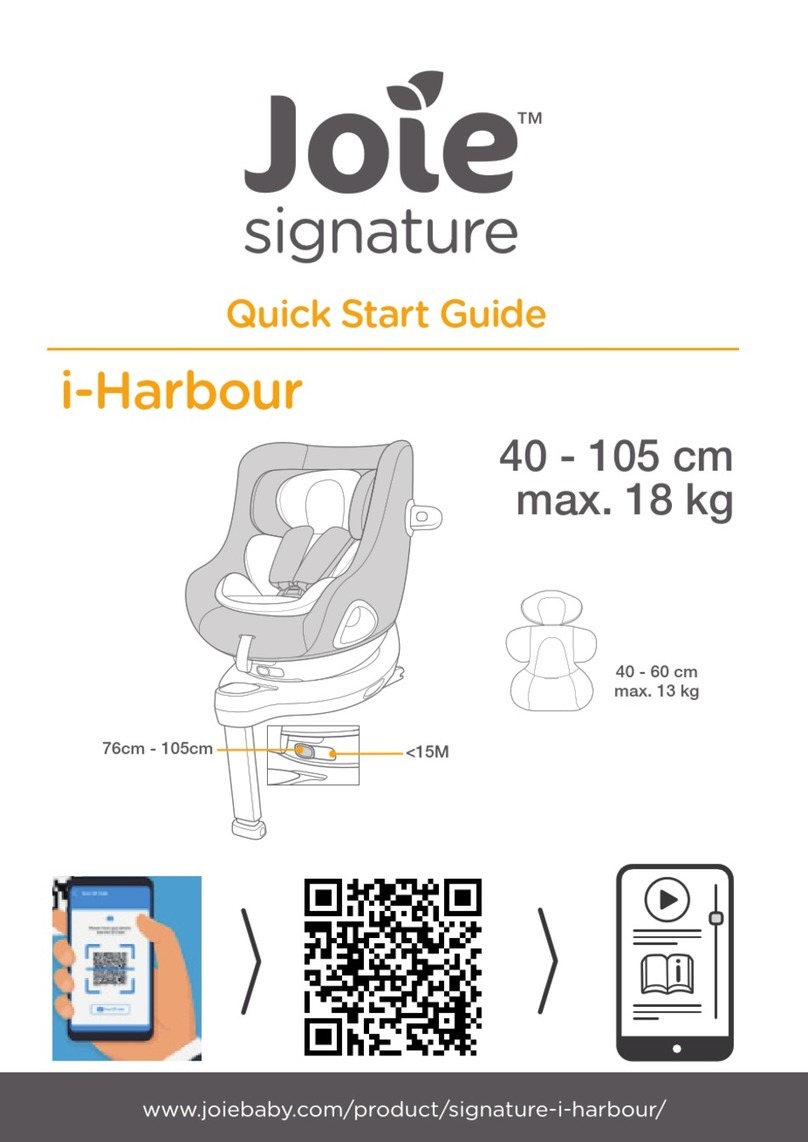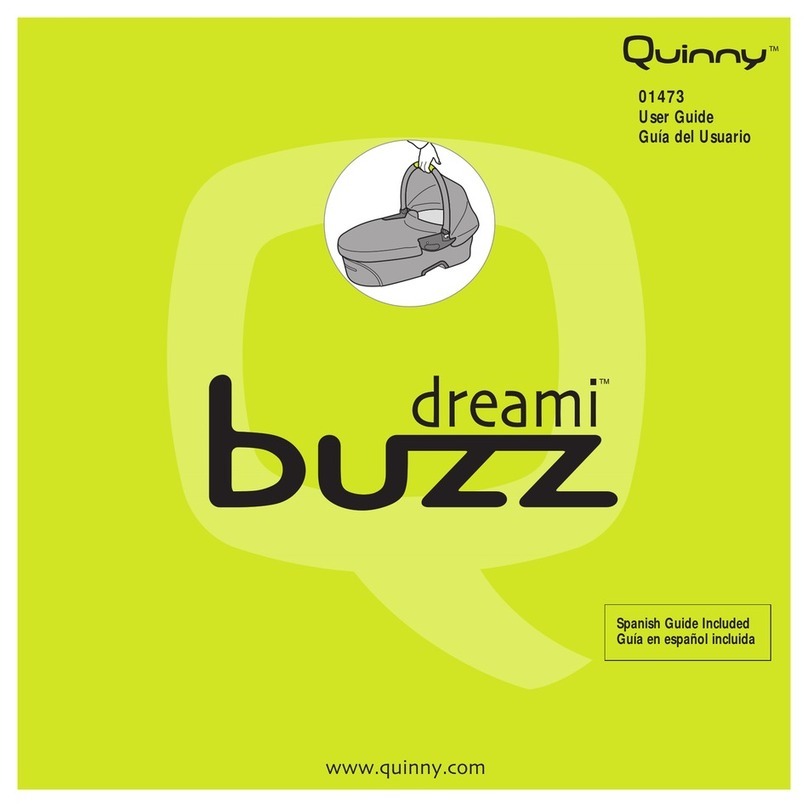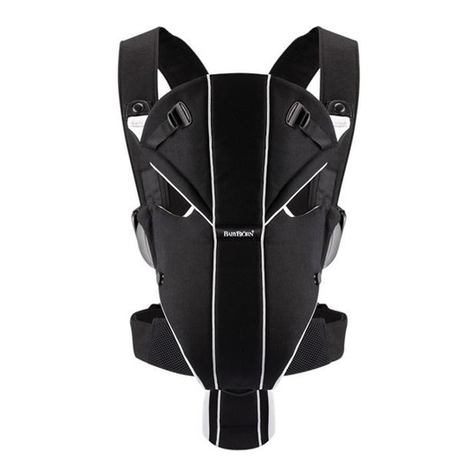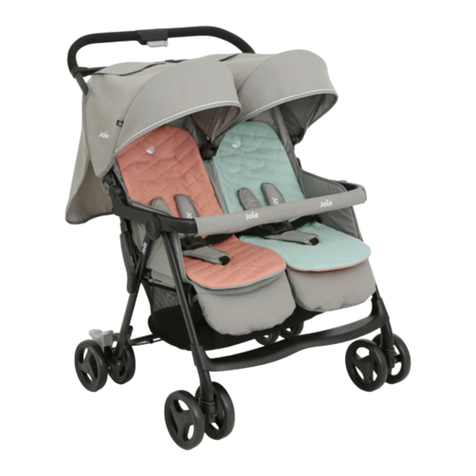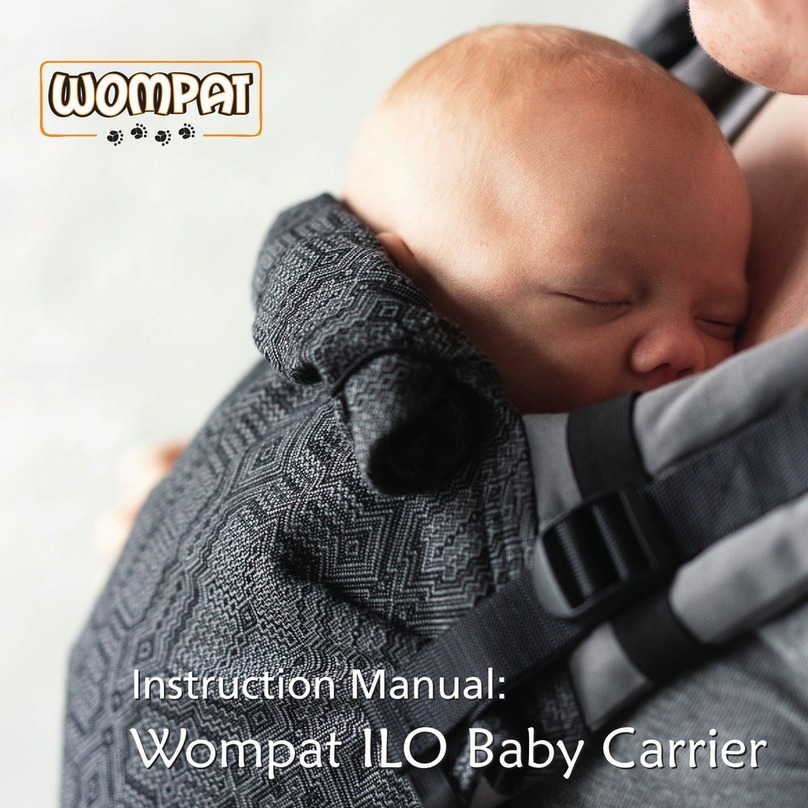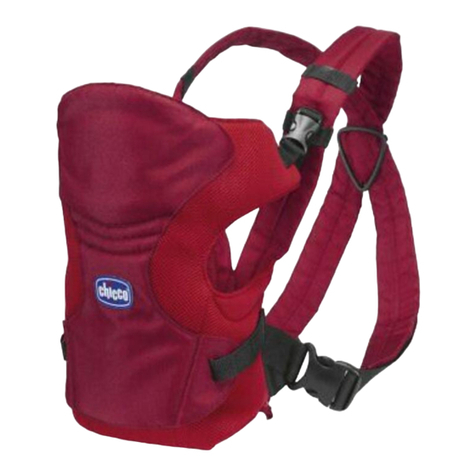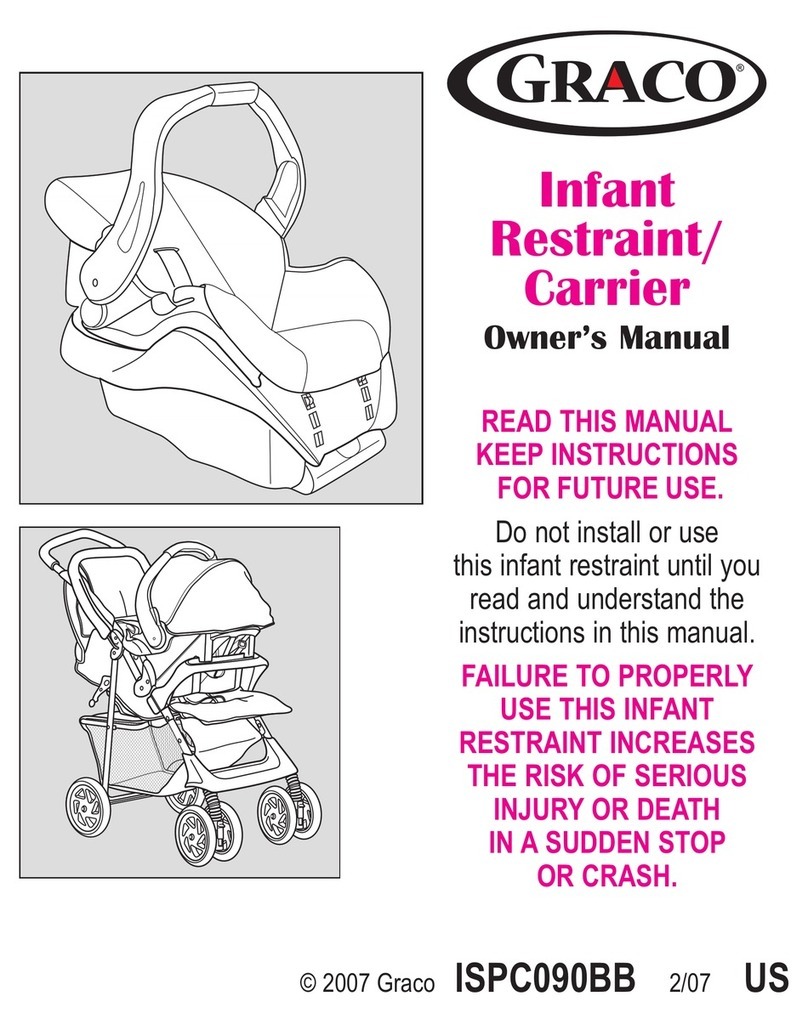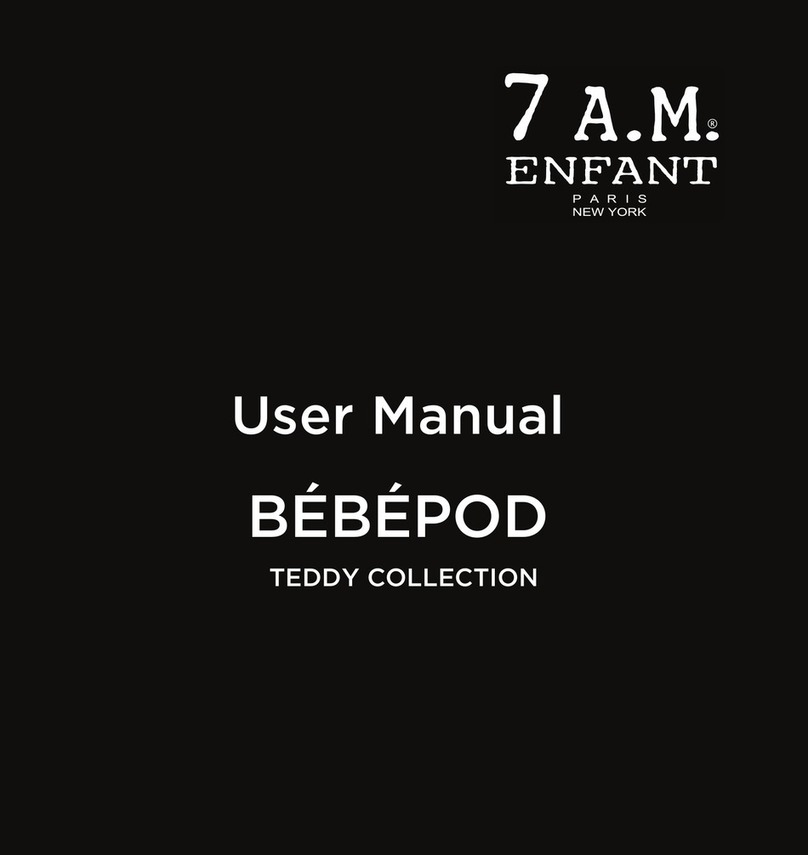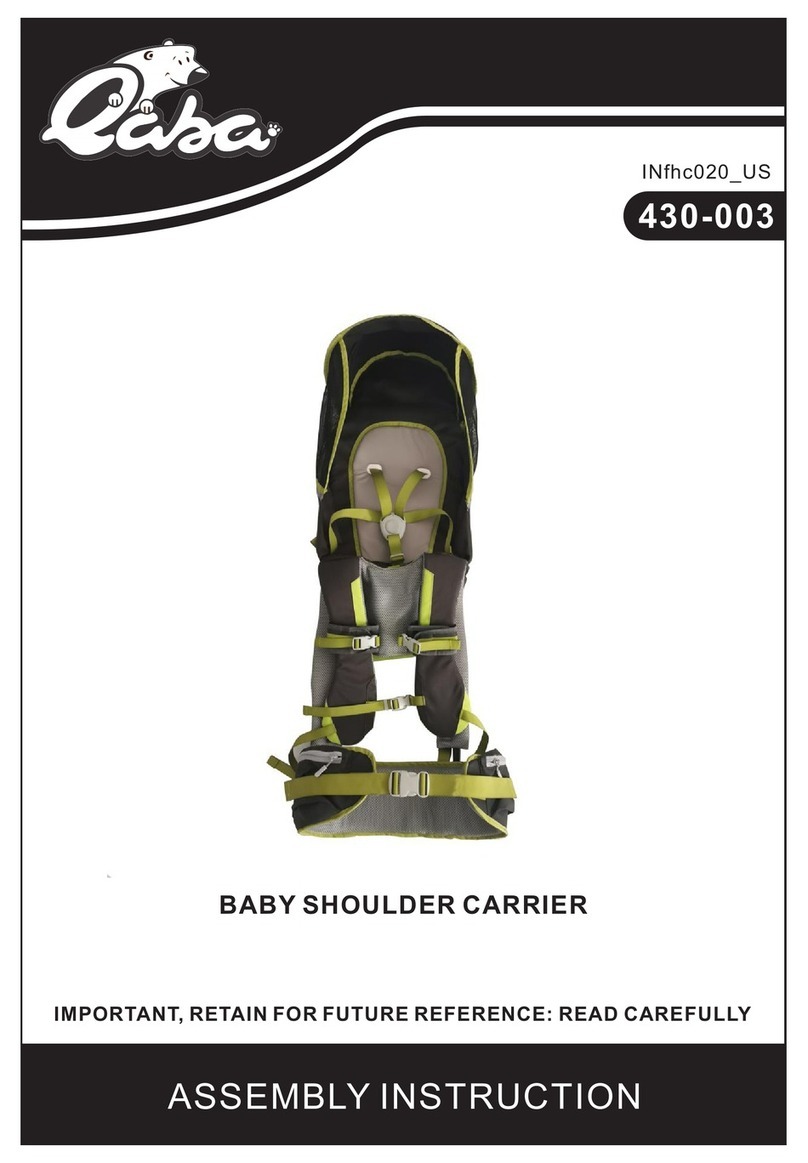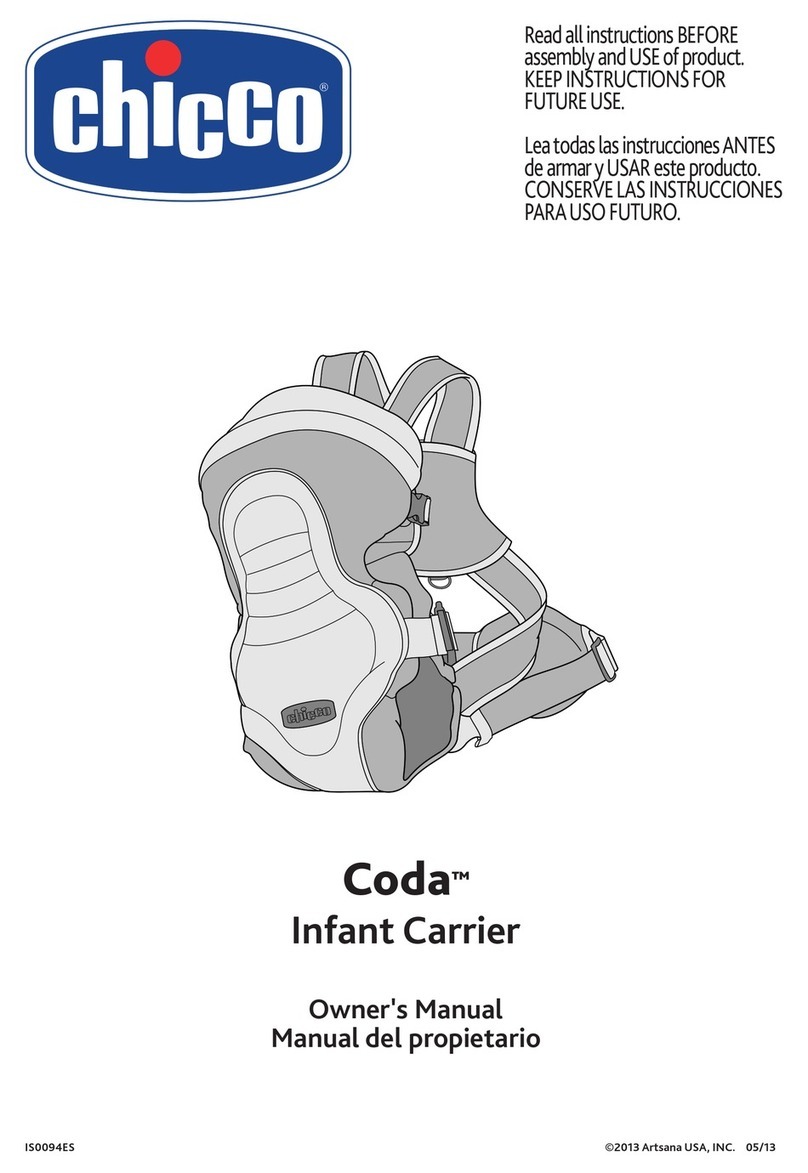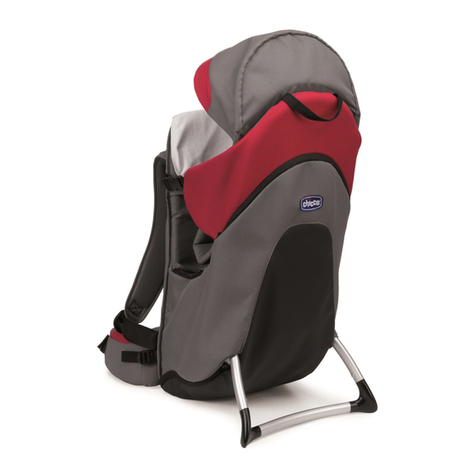
- 6 -
BACK CARRY (Method 1)
Always use Wide Seat Setting.
BACK CARRY (Method 2)
Securely fasten waist belt. Rotate carrier to your right hip
and let it hang. Bring baby up, feet straddling your hip. Bring
the carrier up over baby’s back. Support baby with your right
arm, collect both shoulder straps in front of baby and hold
them together in your left hand.
Hold straps high and taut. Place your right hand (in front of
left shoulder strap and) into the right shoulder strap and take
a firm hold on top of the right strap.
Holding one strap in each hand, arch your left arm over your
head so that you hold the left strap behind your head.
Bend forward and begin to shift baby’s weight to your back.
Assist by gently bouncing and pulling on the left strap.
Place the right shoulder strap on your shoulder and use your
right hand toplace the left shoulder strap over your left
shoulder.
Fasten chest strap at armpit level. Check that baby is securely
in the carrier before standing upright. Tighten shoulder straps.
Make final adjustments to baby’s position to ensure a proper
fit (see next page).
2.
1.
6.
1 2
3 4
5
1
2
2.
1.
Always use Wide Seat Setting.
6
4
5.
4.
3.
5
3
4.
5.
Securely fasten waist belt. Rotate carrier to your back. Bring
the left shoulder strap over your shoulder.
Hold baby with your right arm, baby’s legs straddling your hip.
Slide your left hand under the webbingstrap (along waist belt)
on the inside of the carrier and on to your back. Take hold of
baby’s foot and guide it through the carrier. Baby’s foot should
lay underneath the webbing strap.
Bend forward and begin to shift baby’s weight to your back as
you assist sliding your baby into the carrier withyour right
hand.
Once baby’s leg reaches through the carrier, move your left
hand to your back and fold the carrier over baby’s back. Firmly
support baby close to your body and place theright shoulder
strap on your shoulder with your right hand.
Fasten chest strap at armpit level. Check that baby is securely
in the carrier before standing upright. Tighten shoulder straps.
Make final adjustments to baby’s position to ensure a proper
fit (see next page).
3.

